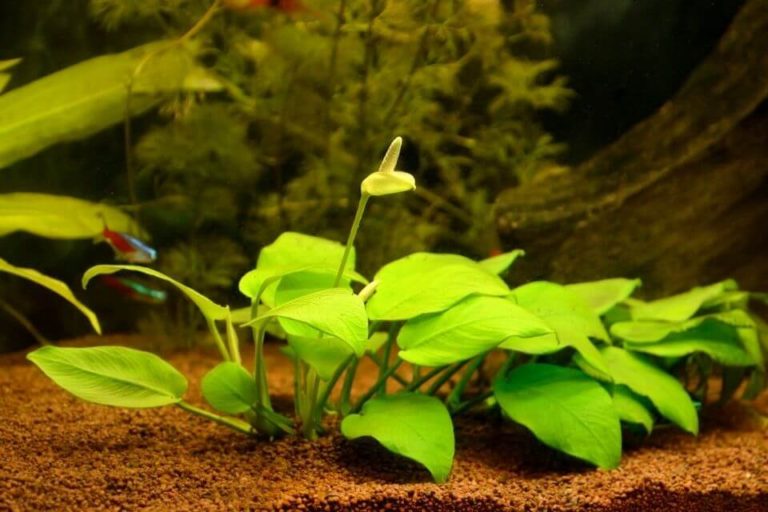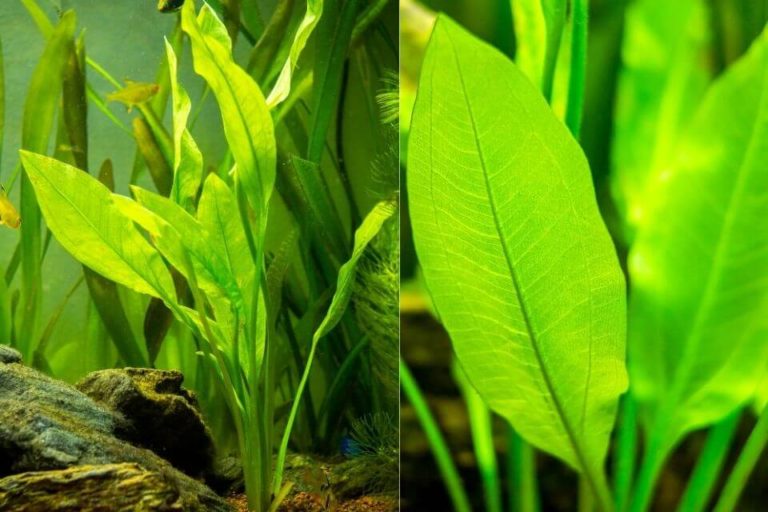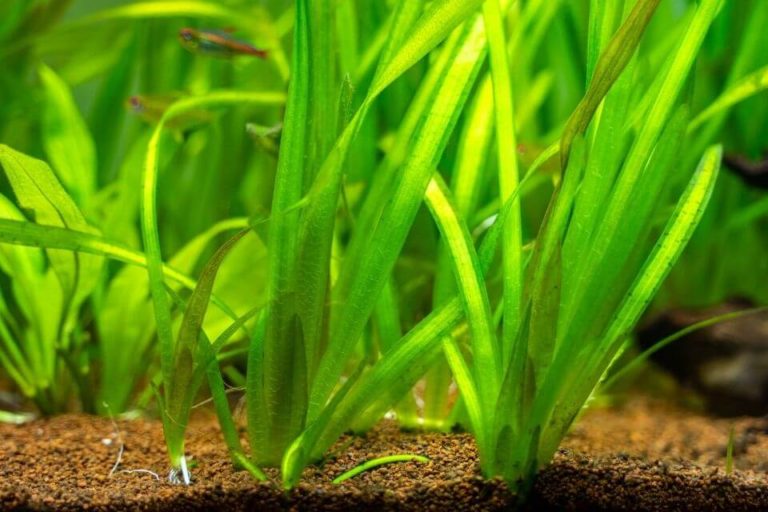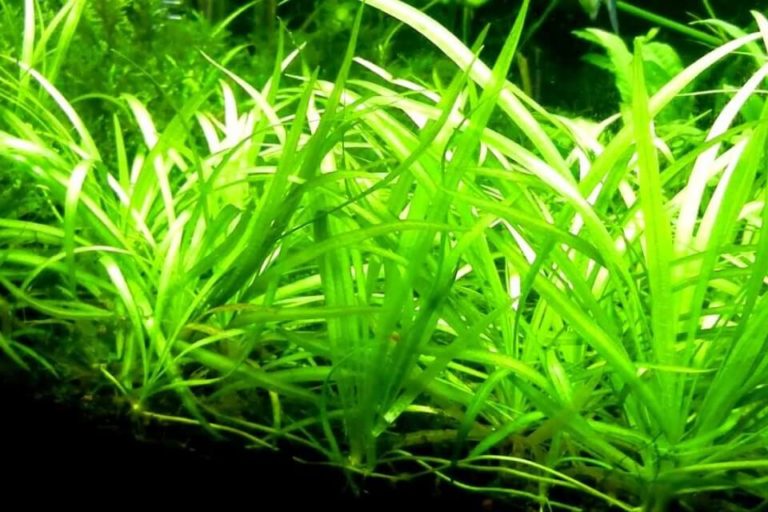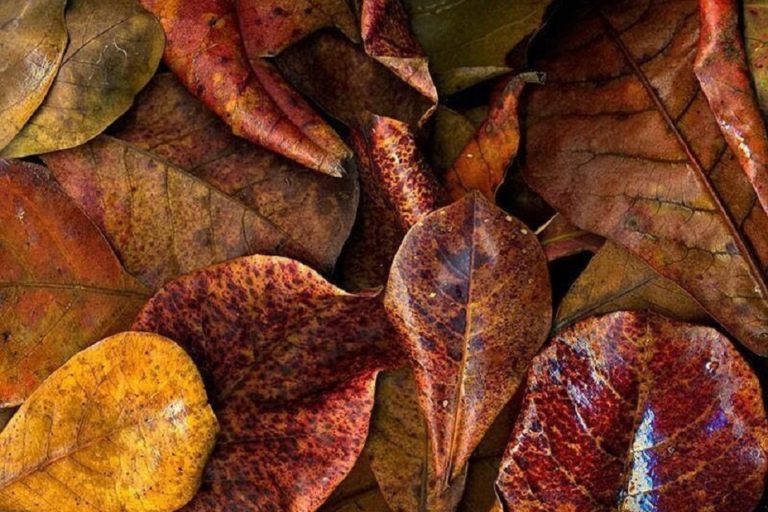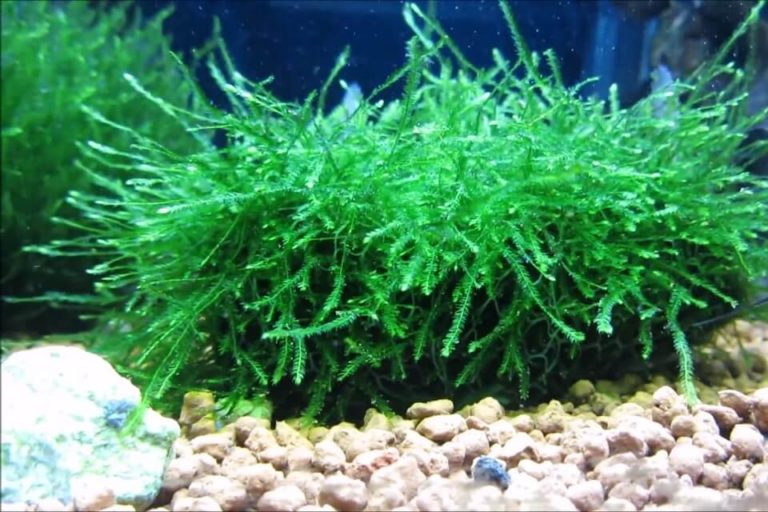Water Wisteria Plant Care Guide: Planting, Maintenance, and Propagation
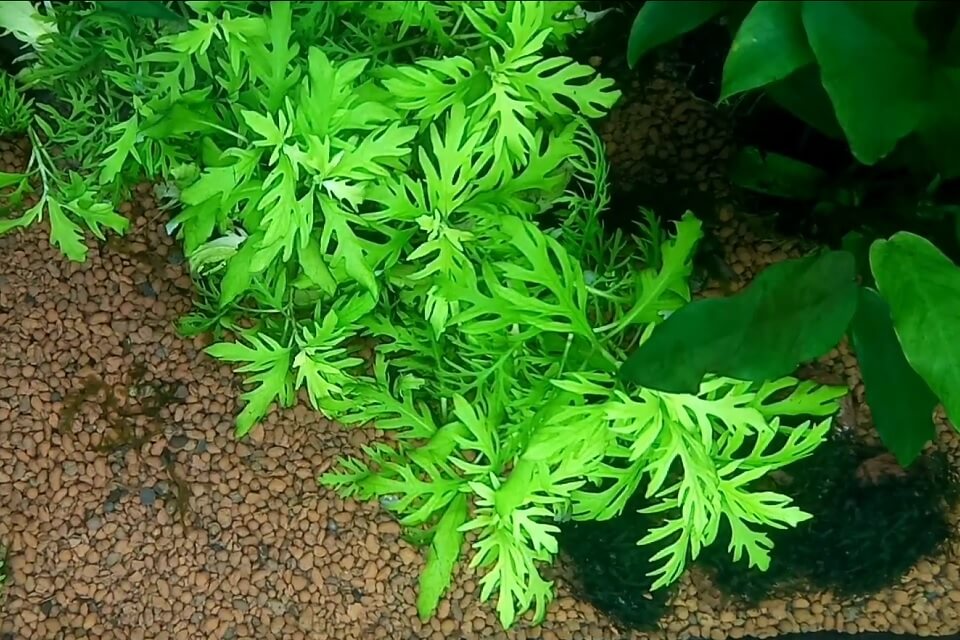
Choosing aquarium plants for your Freshwater Aquarium is very crucial in a typical fishkeeping process. Generally, aquariums should have both live and artificial plants. But living aquarium plants such as Water Wisteria play a vital role in keeping water in its pristine condition.
It creates an ecosystem close to what the natural habitats of the fish offer. Even the basic benefits like providing shelter and security to your fish are still something that makes living aquarium plants a critical addition to your fish tank.
There are many options when it comes to living aquarium plants. But the Water Wisteria plant has for a long time remained at the top of Aquascaping. This natural aquarium plant has won the hearts of many fish keepers and aquarists due to its fast-growing and undemanding nature.
If you have still not found a plant to add to your freshwater aquarium, then this popular tropical aquarium plant is worth giving a try.
This guide contains all the information you need to know about the Water Wisteria to help you fully understand how to plant and cultivate it in your freshwater tank.
| Quick Facts: | |
|---|---|
| Common Names | : Water Wisteria, Vaantjes Plant |
| Scientific Name | : Hygrophila Difformis |
| Family | : Acanthaceae |
| Origin | : Marshy habitats on the Indian subcontinent |
| Care Level | : Easy |
| Growth Rate | : Fast |
| Size | : 7-20 inches height and 5-10 inches width |
| Growth Conditions | : Submersed or Immersed |
| Propagation | : Cutting |
| Placement | : Floating or Carpet |
| Lighting | : Moderate |
| Minimum Tank Size | : 10 gallons |
| Temperature | : 70° - 82 °F (21 - 28 °C) |
| Water Hardness | : 2 - 8 dKH |
| Water pH Level | : 6 - 8 |
| CO2 Level | : Low |
Overview of Water Wisteria
The Water Wisteria is a tropical aquatic plant of the family Acanthaceae. This plant grows in shallow freshwater bodies and marshy lands. It is also a popular Aquarium live plant as it is hardy and easy to grow compared to many aquarium plants.
This plant species is native to India and surrounding areas such as Nepal, Bangladesh, Thailand, Bhutan, and some parts of Malaysia.
In the natural habitats, the Water Wisteria will thrive during the rainy season, but in fish tanks, where the conditions are controlled, it will grow all year round. In natural waters, it can be found floating or partially immersed. With an aquarium, you can grow the plant immersed or even submerged.
With the right nutrients and lighting conditions, Water Wisteria will grow to a height of up to 20 inches. Otherwise, they will not even grow half of this height. When grown in a tank, they will provide the space with bright green colors and work as shelter and hiding places for your tank fish.
Unlike other live aquarium plants, the Water Wisteria is very easy to propagate, and this means that a large amount of them can be multiplied from a very small supply.
The ease in propagation also implies that choosing Water Wisteria will save you the need to purchase a new live aquarium plant anytime you need to freshen up your fish tank.
Water Wisteria will do well in a sand substrate. They need to be supported until their roots fully develop, as they can easily detach from the substrate. Although low amounts of CO2 can be added to their water, they will survive pretty smoothly even without added CO2.
This plant can accommodate a wide variety of fish depending on how you grow it in your tank. If you plant Water Wisteria as a carpet, it brightens the tank bottom and provides shelter to bottom swimmers. When grown higher up the tank, the plant will work for the mid-level swimmers.
Origin and Distribution
The Water Wisteria is native to the Indian subcontinent. Other places in the South Asia region where this aquarium plant originated include Nepal, Bangladesh, Bhutan, and Thailand. In these areas, this aquatic plant mainly grows in marshy habitats.
The plant will mainly grow in shallow waters where it will get plenty of light. In its natural habitat, Water Wisteria will mainly root itself to sandy substrates and spread the leafy matter on the water surface.
Water Wisteria easily spread to other parts of the world to be used for aquascaping, thanks to its fantastic growth characteristics. Today, you will find this plant in many fish/aquarium stores worldwide. The plant is very popular among beginners and seasoned aquarists.
Appearance, Size, and Growth

The Water Wisteria is a bright plant with green-colored leaves and relatively dull stems. They have thin white roots that are buried to the substrate and the plant anchored until they fully develop to support the plant on their own.
With Water Wisteria, it is not just about the bright colors. The plant also displays heterophylly, a condition where the leaves undergo marked changes as they grow. Heterophylly makes Water Wisteria look like a terrestrial/land-dwelling plant.
This unique feature is hard to find in many live aquarium plants, a reason why your Aquarium will stand out and be the center of attraction when you plant it with the Water Wisteria.
The plant will grow up to 20 inches high and around 10 inches wide when enough room, sufficient nutrients, and proper lighting are provided.
Depending on how you plant the Water Wisteria, it may grow up the water surface or spread to form a carpet-like surface at the bottom of the tank. To promote optimal growth, you should correctly plant, trim and provide the right care and maintenance to the plant, as discussed below.
Water Wisteria Planting and Trimming
Before we even go to planting and trimming, it would help if we discussed what you should be looking for when buying Water Wisteria, especially for the first time. First, you need to go to a trustable aquarium store when you know they sell high-quality fishkeeping plants and accessories.
The first thing to consider when picking the plants is the strength of the specimen. Only pick those that stand upright and support their own weight to increase their chances of survival.
Next, you should check the roots. Unless you pick those with a long and sufficient rooting system, the plants may struggle to get the necessary nutrients, thus delaying growth.
The third consideration is the color of the leaves and stems. You should not pick any plant with yellow or brown leaves as this is an indicator of poor health. Go for the brightly colored pieces and only the plants that look entirely healthy.
With this said, we can now dive into the planting options.
You have two main options when it comes to planting the Water Wisteria: floating and carpeting. Let’s look into each of these methods one at a time.
Water Wisteria Floating
Here, you will start by burying the purchased or cut stem vertically into your specialty substrate or any other substrate that you may have (sand or gravel) anchoring the roots into the medium.
When planting, do not congest too many stems in one place as this may lead to competition for light and stunted growth on sprouting. Since this is a hardy plant, it will not need much after this. Just let it grow towards the direction of light until it emerges on the top surface when you will trim it and let it float freely.
Water Wisteria Carpet
Since carpeting keeps most of the space in the Aquarium free, it is the best choice for many aquarists and fish keepers. Here, you will start by burying the stems on their side, rooting them down into the substrate.
All the leaves from the stem or leaves sprouting sections should face upwards as they are the ones to form the carpet. Leave some space between stems for the same reason discussed above. Let the leaves grow to their required carpet height, then trim them to form a flat carpet-like surface in the aquarium.
Trimming Water Wisteria
Trimming keeps everything tidy for the floating live aquatic plants, which if left unattended, may easily prevent light from reaching the other organisms in the Aquarium. This is also crucial processing in keeping the Water Wisteria Carpet at its required height and shape.
Occasional trimming in both cases is a crucial maintenance process. It would help if you cut any overgrown stems and leaves from the main plant and to the height you desire.
All cut shoots should be appropriately disposed of to prevent growing into new plants and congesting the tank, leading to algae or other harmful organisms’ formation.
Water Wisteria Care and Maintenance
Tank size and Tank Setup
Since Water Wisteria is fast-growing and large-sized, it should be grown in aquariums with plenty of space (at least 10 gallons). This plant should never be grown in Nano aquariums as space will look very overcrowded within a short time.
The tank should have supportive conditions such as enough lighting, preferably subdues, a substrate rich in all the nutrients the plant requires, and a mechanical filter to keep the water clean. The pump and the filter should be strategically placed in the tank such that they will not cause intense movements to the planted Water Wisteria.
Water Parameters and Conditions
The beauty of this plant is that it is hard enough to survive in a variety of water conditions. However, to keep it healthy and growing at the required rate, you should provide some water conditions/ parameters.
First, the plant will grow perfectly in soft to moderately hard water (2 to 8 dKH). The water should be nutrients-rich, as we will discuss later in this guide. The water pH should be between 6 to 8.
Water Wisteria will perform best at the water temperature of 70 to 82 degrees Fahrenheit (21 to 28 degrees Celsius). To keep the aquarium environment healthy for the plant, you need to replace 25% of the water every week.
So, you may ask, why 25%? Changing all the water at once may put the Water Wisteria into shock due to sudden changes in the Aquarium’s ecological system.
Lighting
The Water Wisteria plant will grow perfectly under moderate light. Considering that it will always be in search of natural light in its natural environment, it makes sense to provide enough lighting to accelerate growth and brighten the green color on its leaves.
If you want to fulfill all the Water Wisteria’s lighting needs, provide subdued fluorescent or incandescent light.
The period you keep the artificial lights on is also a topic worth discussion now that aquarists think that keeping the lights on for a long time may promote bacterial and algae growth. First, it is advisable to keep the lights on for at least 10 hours a day. While this is obviously a long time, it is not a cause for alarm with Water Wisteria.
Water Wisteria has high nutrient requirements and actually feeds on most of the nutrients that these microorganisms will need to survive. If the environment is deprived-off nutrients, there is no way damaging algae and bacteria. It will be a problem even when the light is kept on for a long. Note that this will also eliminate most of the health problems that tank fish face.
Lastly, since various fish species expect different lighting requirements, you should pick the fish species whose lighting needs match with lighting requirements of the Water Wisteria. We will look at Water Wisterias compatible tank mates later in the guide, so follow the discussion keenly.
Care and Maintenance
As mentioned above, care and maintenance start right when you are planting the plant. First, to make sure that the plant is well-nourished. You should plant it in a specialty substrate that is already infused with nutrients.
In case you want to grow the Water Wisteria in a sand or gravel substrate, then you need to keep fertilizing the water and the substrate. Here is a breakdown of their ideal fertilization requirements:
- Nitrates- 10-50mg/L
- Potassium- 5-30mg/L
- Phosphates- 0.1-3mg/L
- Iron- 0.01-0.5mg/L
- CO2- 10-40mg/L
Since this is a high foliage plant, nutrients such as Nitrates, Phosphates, Potassium, and Iron are needed to keep their bright green leaves healthy and their stems strong. Note that deficiency of minerals such as iron may lead to conditions such as the yellowing of leaves.
This plant can, however, survive in water that has no CO2 supplementation.
Since Water Wisteria can be easily uprooted from the substrate, you should provide support until their roots are fully developed. Frequent trimming is also required to keep the plant sufficiently nourished and lit.
Lastly, you would want to supplement the good filtration system in your aquarium. The Water Wisteria does with a mechanical filter to keep most toxins out of the aquarium ecosystem. Here, you must pick one that does not cause intense movements in the water to avoid distorting the plant’s natural layout.
Propagation of Water Wisteria
The Water Wisteria is one of the easiest live aquarium plants to propagate. In a home aquarium, the most used propagation strategy is cutting. If you just cut a stem 4 to 5 inches from the top (probably a section with leaves), it will quickly form roots and grow into a highly vegetative plant.
Just ensure that you pick a healthy and mature plant cutting that will sprout easily and grow in an accelerated manner. Selecting a mature cut also ensures that you will not leave the rest of the plant hurt and stunted. You can plant it right away, as explained in the planting section above.
Compatibility Tank Mates
Water Wisteria is compatible with a wide variety of tank fish and aquarium plants. Popular freshwater fish species such as the Congo Tetra, Dwarf Gourami, Cory Catfish, Neon Tetras, and all varieties of Shrimps will be compatible with Water Wisteria.
Due to its fine leaves, it would help if you planted Water Wisteria in a tank with small to medium fish. Large fish, especially if kept together, will damage the plant and keep it highly disoriented.
One fish that you should avoid with this plant is the Goldfish. A mature Goldfish will damage the leaves and the stems of Water Wisteria in a matter of hours.
In terms of compatible plants, Water Wisteria will do great with any other live aquatic plant as long as there is no competition for nutrients.
The most straightforward strategy to help avoid this is adopting the correct spacing in the plantation stage. Trimming can also aid in eliminating competition for nutrients and light.
Final Thoughts
Picking the right plants when setting up your aquarium is one of the things that will reduce fishkeeping problems down the road. Water Wisteria, as seen above, offers this and more.
This plant is an excellent choice for both beginner and seasoned fish keepers as it is very easy to grow and maintain. Its’ tall and accelerated growth makes it suitable even for larger aquariums. When grown in nutrient-rich and well-lit conditions, the plant can serve you and your fish for an extended period.
On reading this guide, you should be a master of cultivating this plant in your aquarium. You may also help other enthusiastic fish keepers with the same advice.
Do not forget to visit a reputable store when buying the first lot. This will influence the quality of Water Wisteria plants you will have afterward. After your first quality lot, you can easily propagate and modify it for foreground use.


